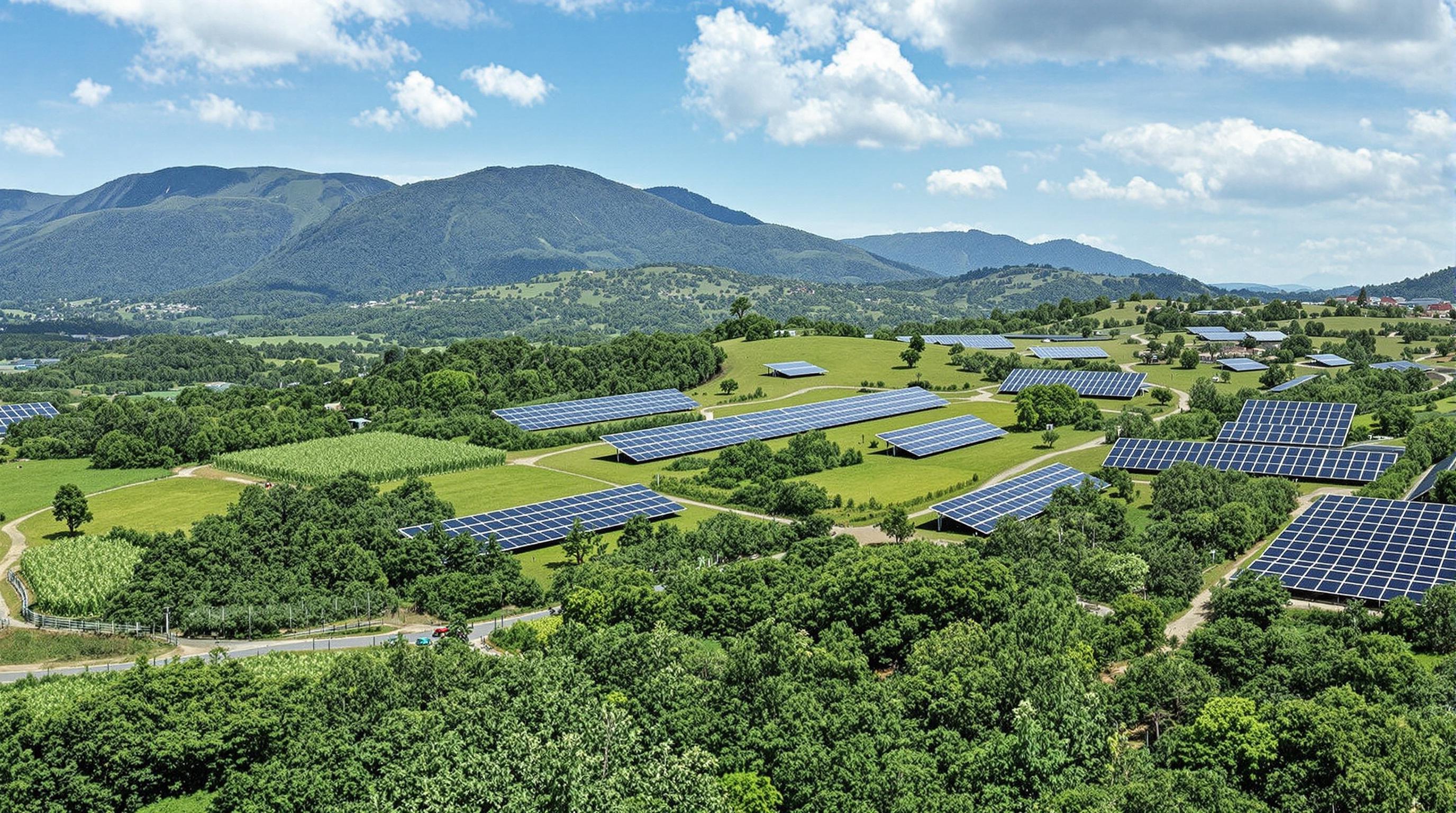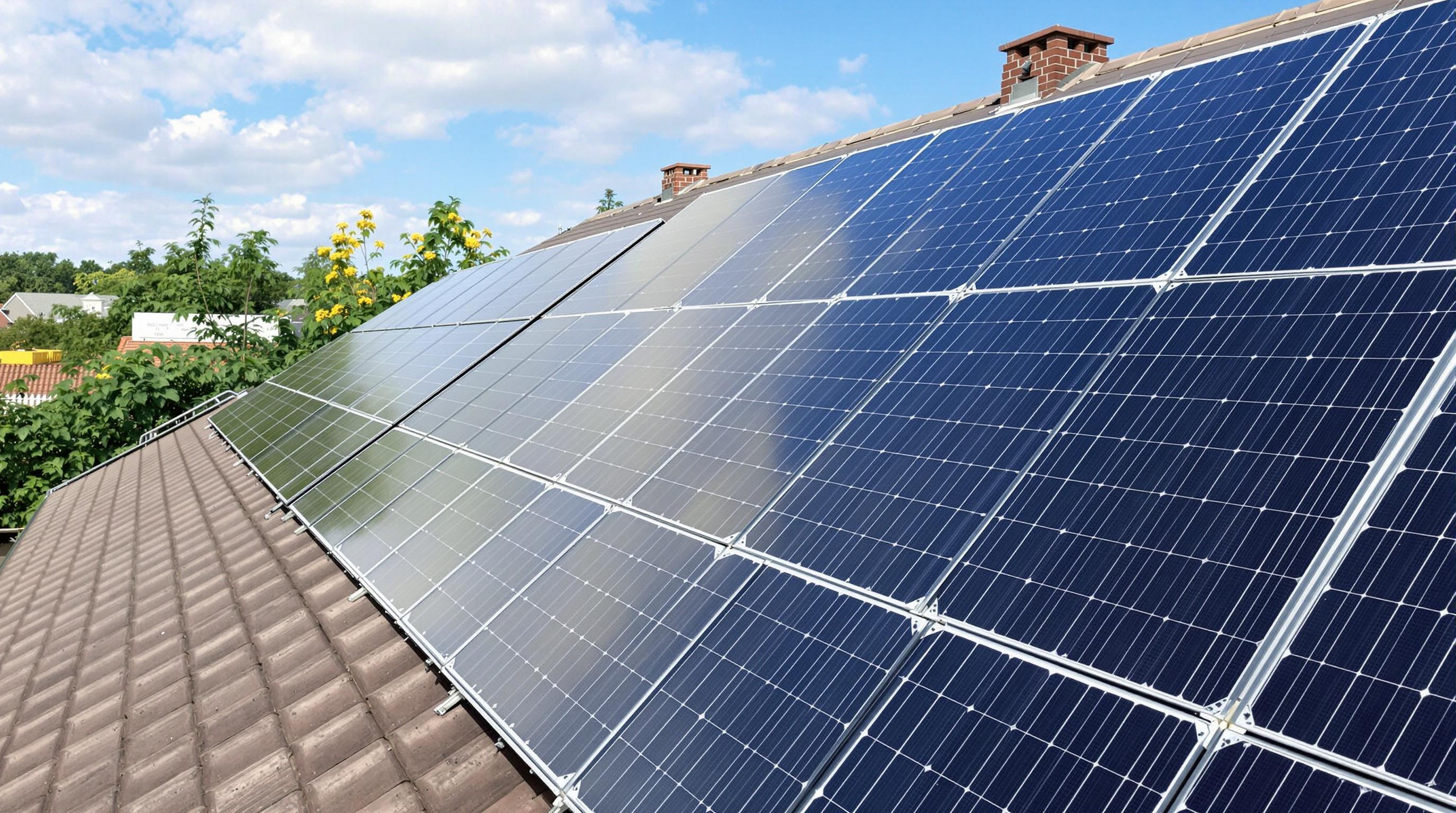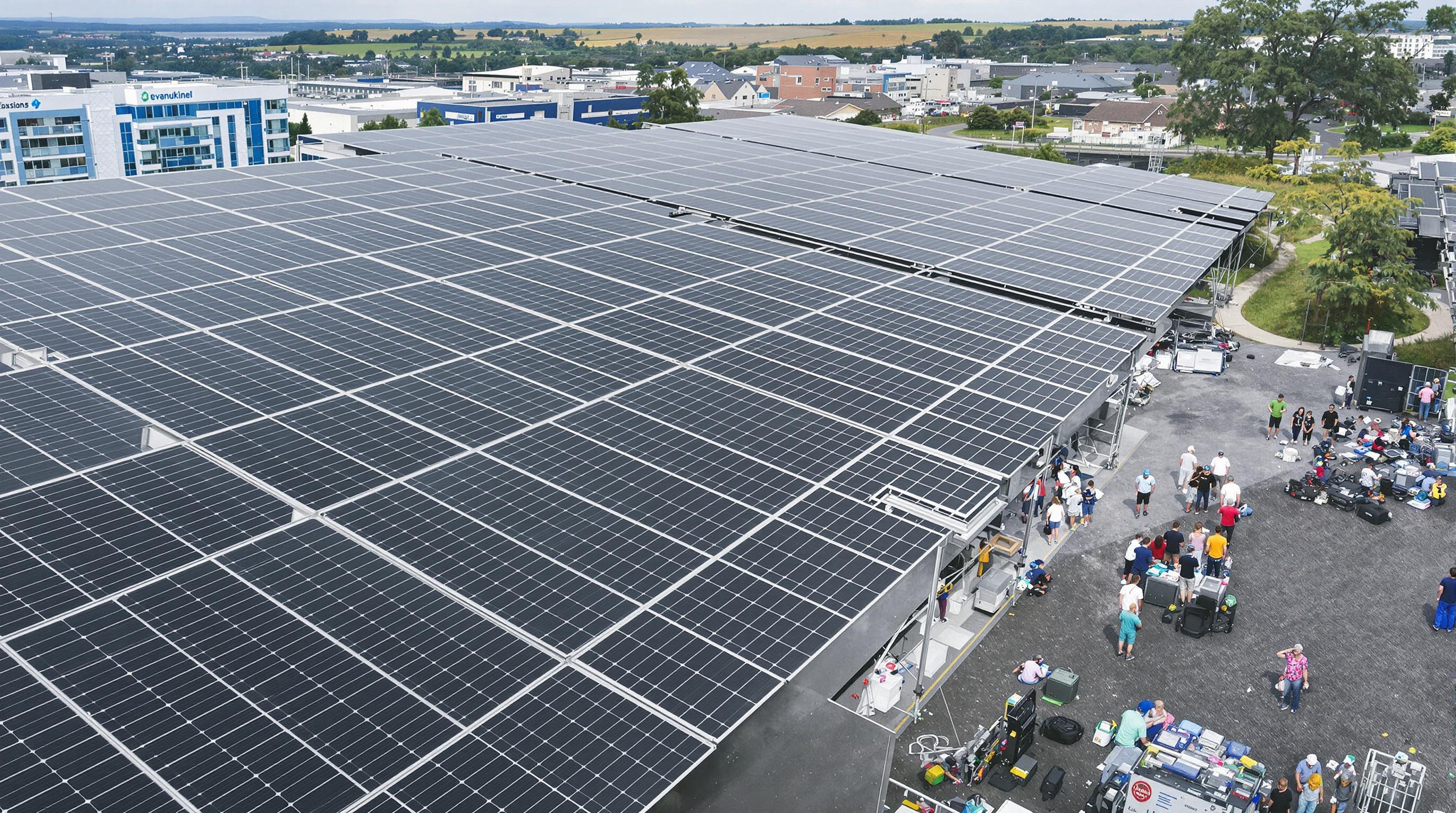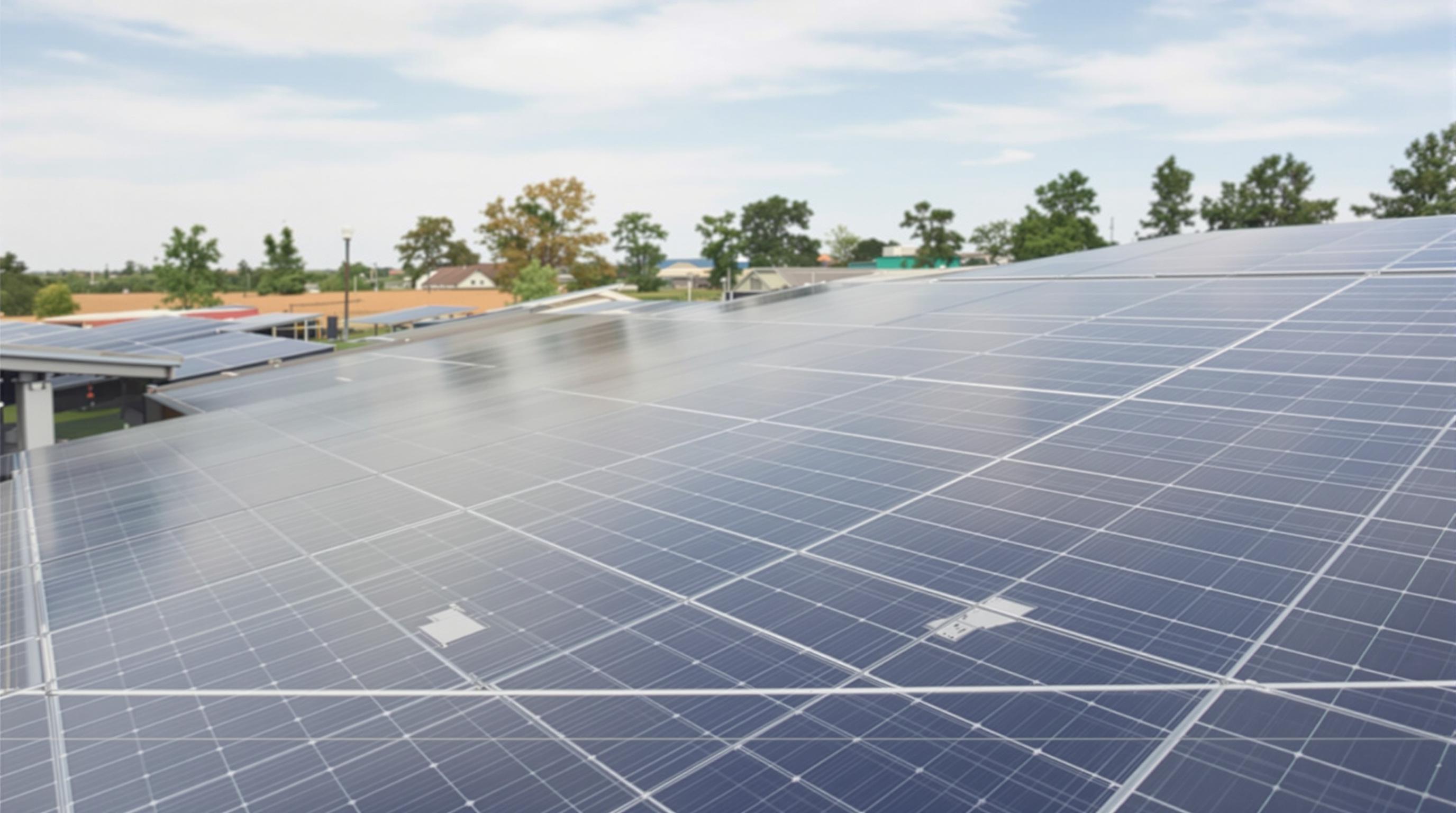Related Articles
- 7 Game-Changing Off-Grid Solar Kits from the Last 5 Years Ranked for Peak Performance and Reliability
- Uncovering the Role of Solar Warranty Disputes in Shaping Consumer Trust and Industry Accountability
- The Role of Behavioral Economics in Shaping Unexpected Solar Investment Decisions Among Rural Entrepreneurs
- Top 5 Emerging Solar Panel Brands Since 2019 That Outlast the Competition in Real-World Tests
- Top 6 Trailblazing Ground Solar Frames Unveiled Since 2019 Revolutionizing Installation Speed and Durability
- How Biodegradable Mounting Materials Could Revolutionize Eco-Friendly SolarRoof Installations by 2030
Top 8 Renewable Energy Innovations Debuting Since 2019: Durability and Value Compared Across Brands
Top 8 Renewable Energy Innovations Debuting Since 2019: Durability and Value Compared Across Brands
Top 8 Renewable Energy Innovations Debuting Since 2019: Durability and Value Compared Across Brands
1. Perovskite Solar Cells
Since 2019, perovskite solar cells have taken the renewable energy sector by storm. These cells boast a unique crystal structure that allows for high efficiency conversion of sunlight into electricity. Unlike traditional silicon-based panels, perovskites offer the promise of higher efficiency at a fraction of the manufacturing cost.
Durability has been a critical challenge for this technology. Early versions degraded quickly under environmental exposure, but recent advancements from leading brands like Oxford PV and Saule Technologies have improved stability significantly. They now promise operational lifespans nearing 20 years, comparable to conventional panels.
When comparing value, perovskite cells stand out for their lightweight, flexible form factor and lower production costs. Oxford PV's models combine silicon and perovskite layers to boost power output beyond 29%, a value proposition that is disruptive. According to a 2023 report by the International Renewable Energy Agency (IRENA), this hybrid approach could become pivotal in future solar markets.
2. Floating Offshore Wind Turbines
Floating offshore wind turbines represent a massive leap in tapping untapped wind resources deep in oceans. Since 2019, firms such as Equinor and Principle Power have deployed prototypes that can harness stronger and steadier winds miles from shore.
Durability in harsh marine environments is paramount. These turbines utilize advanced corrosion-resistant materials and modular designs, enabling maintenance with minimal disruption. The WindFloat Atlantic project shows promising results with turbines functioning well after multiple years in operation.
Value-wise, while initial costs are higher than fixed-bottom turbines, floating models open up previously inaccessible locations. Their scalability and higher capacity factors promise strong returns over decades, and economies of scale are expected to bring costs down significantly by 2030, according to the Global Wind Energy Council.
3. Next-Generation Biogas Digesters
Biogas technology has evolved considerably, with next-gen digesters enhancing methane capture from organic waste since 2019. Brands like Bright Biomethane and EnviTec Biogas have rolled out modular, compact systems suitable for both urban and rural settings.
Durability features include rust-resistant steel and improved microbial consortia that maintain high efficiency under variable feedstock conditions. This prolongs the devices' operational life beyond a decade, reducing maintenance frequency and costs.
On value, these digesters provide dual benefits: renewable energy production and waste management. Their adaptability to diverse feedstocks and ability to integrate with existing infrastructure offer cost-effective solutions for municipalities aiming to cut greenhouse emissions, supported by studies in the Journal of Cleaner Production.
4. Solid-State Batteries for Energy Storage
Energy storage solutions are vital for balancing renewable supply and demand. Solid-state batteries, introduced commercially post-2019 by companies like QuantumScape and Toyota, promise higher energy density and safety compared to traditional lithium-ion cells.
Durability is enhanced by eliminating flammable liquid electrolytes, enabling batteries to withstand more charge cycles and extreme temperatures without degradation. This extension directly improves the lifespan of storage systems in solar and wind farms.
Regarding value, higher upfront costs are offset by longer service lives and quicker charge times. QuantumScape claims their cells could double electric vehicle range and reduce lifecycle costs, facilitating wider adoption of renewables coupled with efficient storage, as noted in recent IEEE Energy reports.
5. Enhanced Geothermal Systems (EGS)
EGS technology has matured to extract geothermal energy from dry rock formations by injecting water to create steam. Since 2019, companies like Fervo Energy have developed techniques to optimize fracturing and heat exchange efficiency.
Durability depends on the integrity of the underground reservoirs and surface equipment. Innovations in monitoring and material science have improved system reliability, with pilot plants reporting continuous operation exceeding 15 years without major outages.
While initial setup costs are significant, EGS provides a stable and constant energy source unaffected by weather. This reliability represents immense value in grid stability terms and long-term power purchase agreements, highlighted in studies by the U.S. Department of Energy.
6. Bifacial Solar Panels
Bifacial solar panels, gaining momentum since 2019, capture sunlight on both sides to increase power generation. Leading manufacturers, including Longi and Trina Solar, have optimized these panels for durability and efficiency.
These panels use tempered glass on both sides, enhancing resilience against environmental factors like hail and wind. Their robust framing and anti-reflective coatings reduce degradation and maintain performance over 25+ years.
Value assessment indicates up to 20% increased energy yield compared to monofacial panels without significant cost increases. This translates into higher return on investment for installation projects globally, with Roth & Rau AG reporting solid market uptake in recent years.
7. Advanced Hydrogen Electrolyzers
Green hydrogen production has benefitted from electrolyzers with improved efficiency and durability since 2019. Companies like ITM Power and Nel Hydrogen have pioneered PEM and alkaline electrolyzers with enhanced materials.
Durability is boosted through corrosion-resistant membranes and catalysts that resist performance loss in fluctuating renewable energy conditions. Operational lifespans now approach 50,000 hours, reducing replacement frequency.
In terms of value, these electrolyzers enable cost-effective hydrogen generation aligned with renewable peaks, facilitating sectors like transportation and heavy industry to decarbonize. The Hydrogen Council anticipates cost reductions exceeding 50% by 2030 due to these innovations.
8. Smart Grid Energy Management Systems
Smart grids have evolved with AI-driven energy management platforms introduced since 2019, integrating diverse renewable sources efficiently. Vendors such as Siemens and Schneider Electric offer scalable solutions.
Durability here refers to software resilience and hardware reliability in various climatic and cyber conditions. Advances in cybersecurity and robust hardware components have reduced downtime and vulnerability.
The value proposition hinges on optimized energy distribution and reduced wastage. Utilities adopting these systems report improved grid stability and customer satisfaction, with the International Energy Agency noting significant emission reductions linked to smart grid deployment.
Conclusion
Since 2019, renewable energy innovations have rapidly evolved, addressing previous limitations in durability and cost. Technologies such as perovskite solar cells and floating wind turbines demonstrate not only technical advancement but improved economic feasibility. Across sectors, manufacturers invest heavily in durable materials and design optimizations that extend lifespans and reduce maintenance.
Value comparisons reveal a trend: while some technologies carry higher upfront costs, their long-term performance, reduced operational expenses, and environmental benefits position them favorably. Innovations in energy storage and management further enhance the viability of intermittent renewable sources, promoting grid stability and wider adoption.
Continued investment and research are crucial to scaling these solutions globally. As industries and governments pursue aggressive decarbonization, the interplay between durability and value will dictate the next phase of renewable energy expansion.
Sources:
International Renewable Energy Agency (IRENA), 2023 Reports
Global Wind Energy Council Research, 2022
U.S. Department of Energy Geothermal Technologies Office
Hydrogen Council Market Outlook, 2022
IEEE Energy Journal, 2023
Journal of Cleaner Production, 2021




